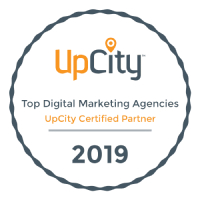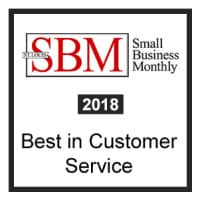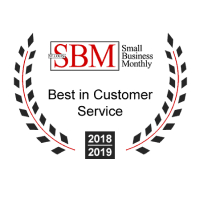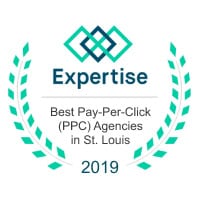 For any business that has a website, the one single goal that overrides all others in significance is the conversion rate. To get those conversions, you need quality content, SEO, social media, advertising and a fantastic website design. In this blog, we are going to stick to the topic of how to improve your website design to increase conversions. While you may already have a nice looking website, it might not be driving business. If you are not satisfied with the sales numbers you are receiving in direct correlation to your site, it's time to get your conversation rate optimization (CRO) in order.
For any business that has a website, the one single goal that overrides all others in significance is the conversion rate. To get those conversions, you need quality content, SEO, social media, advertising and a fantastic website design. In this blog, we are going to stick to the topic of how to improve your website design to increase conversions. While you may already have a nice looking website, it might not be driving business. If you are not satisfied with the sales numbers you are receiving in direct correlation to your site, it's time to get your conversation rate optimization (CRO) in order.
If your site is not user-friendly, you can forget about conversions. Even if you are the #1ranked site for your target keywords and your site looks incredible, if someone can't figure out how to use it, they won't buy your product. To make it user-friendly, you first need to think of who the user is.
1.Smooth Navigation
Once you determine they type of person they are, audit your site based on those answers. Make sure the site navigation is smooth, and there is a clear call to action and secure and straightforward contact forms. Remember, a visitor’s forms their opinion about your website in their first few seconds on a page.
2. Update Your Site With Quality Content
When you are using a website to drive business, content is both the traffic driver and the conversion generator. It is what brings that user in, gets them to invest in your brand, and possibly makes the sale. Content is where the consumer can relate to your brand and interact. Keeping content fresh and updated shows that you are on top of your industry trend and care about your customers. Whether it’s an engaging video, long form blog piece, or infographic, valuable content is a key to website conversions.
3.Make it Aesthetically Pleasing
Pleasant and pretty sites make users feel calm and more inclined to stay around. Colors and visuals ignite emotions and influence purchase decisions. Check out this article on the use of psychology of color in websites. Make sure you are choosing the right look, feel, and tone for your brand. White space is just as important as color and copy and should be used in an aesthetic manner to direct the user to the call of action.
4. Have Clear Copy
By this, we mean cut the jargon. You don't want your customers confused or needing to ask 20 questions before making a purchase. Unless entirely necessary, cut the industry talk. Write for your clients who are on your site and write with clarity. Imagine if you were explaining your product to a friend and write as if you are talking to them.
5. Make it Mobile Responsive
Responsive Web Design (RWD) is an approach that provides an optimal viewing experience of your website on a mobile device (phone or tablet). RWD includes ease of reading and navigation with a minimum of resizing and scrolling. Mobile sales have already overtaken desktop sales and 67 percent of users claim they are more likely to purchase from a mobile-friendly website. Make sure it's easy to navigate your site across many device platforms, and that customers and shop with ease.
With the above tips and working with a website designer, you business should be bringing in conversions. If you have a website, you want it to work for you and bring you business. If you need to create a website from scratch or need help optimizing your current site, contact today. We are a St. Louis web design firm that creates solid websites that provide you everything you need to produce a smooth sales funnel, from your customers finding you all the way down to making the deal.
 It can happen in a flash; an angry customer responds to a well-intended post on social media. They quickly share an awful story that happened to them and everything spirals rapidly downhill. This is one of many moments where companies need to be prepared to prevent, respond, and fix issues online.
It can happen in a flash; an angry customer responds to a well-intended post on social media. They quickly share an awful story that happened to them and everything spirals rapidly downhill. This is one of many moments where companies need to be prepared to prevent, respond, and fix issues online.
In a world that is full of online consumers, digital reputation management of a brand is so important. Online reputation management is not just about what people think of the brand. It's about what the brand is doing, how it interacts with people, it’s voice, values, and how it responds to challenges. With a well thought out, pre-planned digital strategy it becomes easier to manage your online reputation. A strategy that can turn a potential reputational crisis into a success story. It can prevent your company from being talked about for all the wrong reasons.
Social media is a powerful tool for your brand. This is where our customers can publicly interact and be heard. Your company should have a social media strategy in place that includes how to respond and interact with both positive and negative feedback. The first step is maintaining your pages. This means keeping them updated with relevant content, responding quickly to questions and comments, and ensuring you are presenting your brand with the tone, voice, and image you want.
Should you receive a negative comment from an angry customer, the rule of thumb is never to delete the comment. If you delete your customers' comments, it could make them more upset, and they will post again and find another way to attack. You have to respond kindly, calmly and professionally to their comment and address the situation. Sometimes there is not much you can do. According to Forbes, there will always be trolls, and they are not going ever to listen to your replies, so sometimes you will need walk away from the situation after you have attempted to resolve the issue. If you offer a sensible and reasonable response, even if you can’t tame the trolls, you will have provided an example of your excellent service to anyone else that may be watching.
For more information on how to respond to negativity check out our blog on customer complaints.
One way that brands try to gain a positive reputation online is by asking customers to write reviews. It wouldn't be ethical to offer rewards for positive reviews, but you might be surprised how often people follow through on a simple request. But timing is everything. Ask your customers right after they purchase the product, not a few months down the road. Guests may be less apt to participate during a busy holiday season, but asking never hurts.
Make it easy for your customers by signing up for an online service that will email your customer to write a review after they purchase the product. Or simply let your customers know you are on Yelp or social media so they can leave a review there. Remember to thank them publicly after they leave a review showing them appreciation.
Most brand reputation strategies of the past looked at outranking negative reviews with positive SEO and rankings. They would try to bury the negativity with positivity in the search results. This doesn’t work so much anymore. If you overheard a customer complaining to a friend on the street, out-shouting them is not the solution (and will probably get you labeled a little nutty.) Online, as in real life; if there is negative information your customers will still find it whether it's on blogs, review sites, or social media. If you want to understand your brand reputation, you’ll need to look beyond what comes up in search results and search everywhere your customers may be. Use this as an opportunity to learn about your reputation and then fix it!
Proper brand management can help you grow your sales and establish your success in the long term. No matter how big or small, businesses need to manage their online reputation. If you are facing an issue online or would like to discuss managing your reputation, contact us today.
 Social media is an extremely valuable tool for small businesses. If you're just starting out on social media, you might not know how to make the most of your account. With studies reporting that approximately 72% of adults use social media, your business can not afford to ignore the medium. Where should you start?
Social media is an extremely valuable tool for small businesses. If you're just starting out on social media, you might not know how to make the most of your account. With studies reporting that approximately 72% of adults use social media, your business can not afford to ignore the medium. Where should you start?
It's important to remember that your company's presence on social media doesn't have to be complicated. It doesn't have to consume all of your time and it doesn't have to stress you out.
Like most things life, social media is best when you keep it simple. Dedicate some time to it but don't go overboard. Place your focus on the platforms which will serve your company the best (Facebook, Twitter, etc.) and be yourself. Don't worry about reinventing the wheel. While innovation is a good thing, you don't need to over think your plan when starting out.
That's up to you. Every company is different. However, your content should serve a purpose and fulfill a need. If all you do is promote your business, consumers will tune out. You can put up advertisements and promotions, but make sure it's of value. Aside from relevant, useful content for your readers, you should be having conversations with your customers. An engaged consumer is a customer every small business wants.
Worried that you'll receive waves of criticism? You might, but you should take it as it comes. An active company account on social media will open the door to plenty of negative comments. You'll also see plenty of positive ones. Treat all of this feedback equally and try your best to learn and grow as a company based on the feedback you receive.
The way you shape your words with social media make a big difference in how customers and strangers react to your business. We all strive to have lots of followers on Facebook and Twitter, but how do we get to that point? The answer isn't just content—it's authenticity. Authenticity is the greatest asset you can have, as it directly affects trust and attention. If your customers know you act in a way that seems genuinely helpful, and that you care, they will be more likely to take action when you sell to them.
Many small businesses hear this and immediately think, "Sure, this all sounds great, how do I become recognized as an authentic thought leader in the quickest time possible?" The truth is, building authenticity isn't just a magical flick of the switch where customers instantly give you the time of day! Strong customer connections are built over a period of time, and require adapting your voice to the audience you want to reach. For example:
If the social media landscape is a neighborhood, think of yourself as the new kid that just moved in. You want to make friends, but nobody knows you yet, or what you're like. Does this mean everyone is immediately going to trust what you have to say and connect with you? You're on their turf now. Earn your way by proving your trust and value, all of which happens gradually.
What makes people follow the brands or businesses they do on social media sites? It is their unique voice, their communication that strives to be helpful, informative, entertaining, or even playful. The way you engage others follows a similar formula: your language should fit your objectives and values, while modifying slightly to adopt a tone that keeps conversation going. Without your voice, you're just another business in a sea of competitors, vying for the ever shrinking attention of everyone with a social media account.
Pay attention to how others react to your voice, and don't be afraid to tweak it. Ultimately, you want your personality to shine through, and it won't just happen if you take on the same monotonous tone day in and day out. Study your competition, and see how others in your industry are doing it. Are they successful, and if so, what approach are they taking? Can you find a way to build upon their mistakes and victories, and increase your authenticity?
Those are the basics. It doesn't have to be overly complicated. However, there are other ways you can try to use social media in order for your company to break through the social media clutter. If you'd like additional tips and advanced advice, contact Seafoam Media. Our St. Louis Social Media Agency specializes in creating unique and specialized social media strategies for small businesses.
A couple of weeks ago we wrote about backlinks and our love for online networking. After all, it is fun to network digitally and share content among friends, colleagues, and fellow St. Louis SEO enthusiasts. And since we are in a safe space, among friends, we know you will just LOVE our latest song. So, as promised, our newest SEO rap; Baby Got Backlinks. May Sir Mix-A-Lot forgive us...

I like backlinks and I cannot lie
But spammy links don't apply.
If you want to rank with no time to waste
and you pay out cash to get placed
you get STUNG!
'cause Google won't have none.
Deep in the links that you're sharing
Google is looking for natural pairing.
So if your backlinks aren't related
be prepared for your site to get hated.
So let this count as your warning
or a tank-out rankings you will be mourning.
So how to get good linking?
Oh baby, you know you're thinking.
You say you want to link with me?
Well, woo me, use me.
'Cause I ain't your average link, see.
I've got good content
My posts so relevant
So mad backlinks I will get
When you point your site to my content.
The Algorithm don't want none
unless you got links, son.
We see the magazines
Saying linking is the thing.
But despite that claim
they aren't all the same.
Only relevant links get you game.
So Fella's (Yeah) Fella's (Yeah)
Think your backlinks are the best?
Then you'll rank it. (Rank it.) Rank it.
Rank those weighty links.
Baby got back (links)
So this is what happens when you over-caffeinate us. Hope you enjoyed our mad rhymes! Until next time, keep your backlinks flowing...
 Have you hit some road bumps while trying to amp up your LinkedIn game? Maybe you are wondering if you are missing out on some of the best functions the channel has to offer. LinkedIn can be one of the more challenging social networks to navigate. Every social media channel has a unique advantage. Facebook has the social reach and power to get your brand in the thoughts of many, Twitter can reach new people through hashtags and searching, and LinkedIn has a niche demographic with almost exclusively professionals and businesses. Unfortunately, with the market niche, come some restrictions, but that just means you need to find out the secret LinkedIn loopholes and best practices.
Have you hit some road bumps while trying to amp up your LinkedIn game? Maybe you are wondering if you are missing out on some of the best functions the channel has to offer. LinkedIn can be one of the more challenging social networks to navigate. Every social media channel has a unique advantage. Facebook has the social reach and power to get your brand in the thoughts of many, Twitter can reach new people through hashtags and searching, and LinkedIn has a niche demographic with almost exclusively professionals and businesses. Unfortunately, with the market niche, come some restrictions, but that just means you need to find out the secret LinkedIn loopholes and best practices.
Hearing client’s run into LinkedIn obstacles has led us to dive deep into the channel and discover how we can best jump certain hurdles and help client’s use it to its full potential. In this blog, we are going to share our findings and LinkedIn’s best-kept secrets that can help your brand.
One of the limitations of a business page is the new commercial search limit. It’s meant to cut down on “commercial usage” of the profile search feature and push power users to premium accounts and keep businesses from spamming users. If you want to increase your search limit, there is a tool to help. This interface works efficiently and allows you to search unlimited and not just in your related network.
Groups are exclusively reserved for individuals; meaning “Company” pages cannot access them. Keeping companies out of groups is done to protect the interests and needs of individual users.
As the Group search box now only searches for content within group posts, you must use the Advanced Search to search for potential prospects. Here’s how:
3. Use the Page for Reputation Management
Fill out your profile as completely and accurately as possible, post new content regularly, and make sure new users will get a positive first impression of your brand. This is reputation management and what you should be doing across all your social media profiles. Remember to keep LinkedIn more conservative and about business. This is the place to share job openings, company updates, industry articles, and events.
4. Involve Employees
Finally, consider getting your employees involved in the promotion of your brand on LinkedIn. Have them add the company as their current place of business. This will immediately increase the visibility of your page. Ask your employees to share pieces of your content from your website or just reshare your LinkedIn posts to their page.
Not all strategies work for every business, but it won't hurt most businesses to have an established LinkedIn page. If you do have a page, it’s best to stick with it and keep it updated. Don’t let your page stand empty and alone.
If you are new to the LinkedIn game or wondering if a page is right for you, check out this blog we wrote about the benefits of a LinkedIn company page or visit our St. Louis social media management page. We say give LinkedIn a shot and see what you think and remember to follow us on our page.

We have said it before, but it bears repeating, that we at Seafoam Media are search engine optimization nerds and proud of it. As a St. Louis SEO company we deal with the ups and downs of search engine optimization, keywords, backlinks, and Google. We talk about backlinks and Google so much that we sometimes sound like a broken record. So today we offer our thoughts on backlinks and their value for SEO. First things first, what are backlinks?
The short answer is relatively simple, backlinks are the relationships amongst pages on the internet, according to the marketing too, Majestic. Moz has an even more straightforward solution, offering that backlinks are simply a link from another website that points back to yours. So what's the big deal? In much the same way many companies cultivate relationships in their industry and community for reputation building, referrals, and awareness; backlinks offers a way for a business to leverage online relationships into brand awareness and web traffic. This, in and of itself, is a valuable tool in any company's arsenal. After all, relationship building is vital to a company's success both online and off. But backlinks offer more than just a relationship with another website and its users. Well, targeted backlinks are a critical indicator of a website's authority and reputability.
Before Google was, well... Google, it was known as BackRub. It was called this because their program analyzed the websites backlinks to understand what the site was about, how important it was, and what other sites it related to. While the technology has obviously advanced from its humble beginnings, backlinks are still a key piece in how it ranks websites on its search engine. Google looks at backlinks as an indicator of a site's authority of the web. In theory, sites with lots of backlinks, or people pointing to them, will rank higher than those with fewer. Backlinks on their own, however, are not enough. Now that algorithm has become much smarter, and Google can determine which backlinks are based on legitimate "relationships" and which are just a spammy attempt to trick the search engine.
Google has cautioned people against trying to garner as many backlinks as they can, simply for the sake of ranking. Rather, Google would prefer to offer users excellent and relevant search results. Google's Matt Cutts offers the following insight.
As you can see, content is crucial to Google, and they are trying to tweak their program to reflect informative content as well as relevant linking. Google has gone so far as to penalize sites that have a myriad of backlinks from sites that are completely unrelated to their area of expertise. What does that mean for the average business owner trying to make their way in the world of SEO? Well, that is still relatively simple. It is better to create online relationships, rather than just random links. For example, if you are the owner of a pet grooming business backlinks from related industries like veterinarians and pet sitters are far more helpful than a link from a dry cleaner. A pet blogger writing about pet grooming tips would be far more relevant than a spammy directory listing with no discernible authority or credibility.Related industries aren't the only answer, though. Businesses build relationships within their community, and Google understands such relationships. So, for example, a St. Louis SEO company like Seafoam may garner links from businesses that we have worked with or charitable organizations that we have helped. Backlinks that highlight a legitimate relationship or ancillary industry or topic would all be considered beneficial to Google. In short, backlinks are important t increase a site's presence on the search engine. Just like networking in the real world is important, digital networking through backlinks cannot be ignored.
It has been a while since we have tortured delighted you with an SEO Song and we know you are patiently waiting for us to drop our next rhyme. So, don't worry a new Seafoam rap all about backlinks is coming your way next week.























